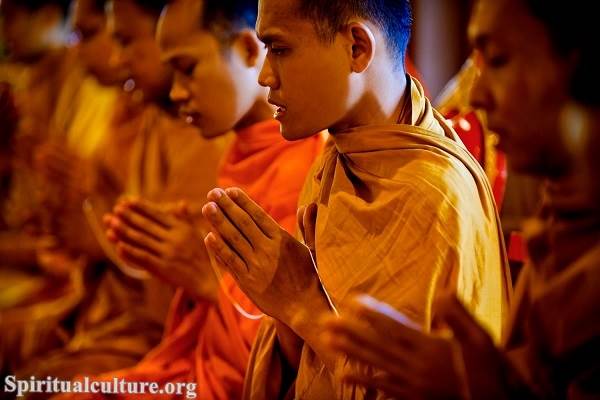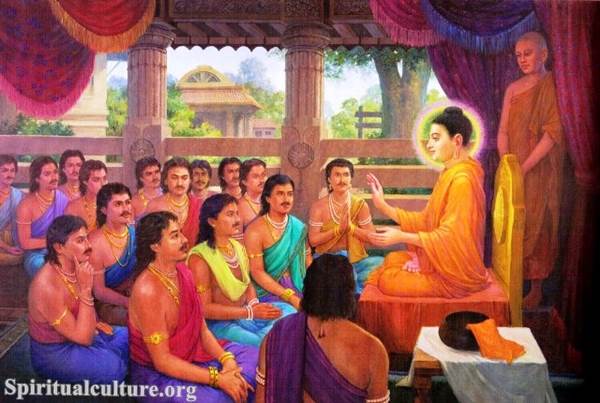However, some rituals and practices are considered spiritual or devotional, including chanting, reciting traditional texts or mantras, and offering statues or images of the Buddha or other enlightened beings.
One common form of devotion in Buddhism is the recitation of the “Three Refuges” or “Three Jewels,” which involves repeating the phrases “I take refuge in the Buddha, I take refuge in the Dharma, I take refuge in the Sangha.” These three refuges represent the Buddha as a teacher and source of enlightenment, the Dharma as the teachings and path to enlightenment, and the Sangha as the community of practitioners who support and inspire each other in pursuing enlightenment.
Other common practices include prostrations, where practitioners bow down before statues or images of the Buddha to show respect and humility and make offerings of incense, flowers, or other objects to express devotion and generate positive karma.
It’s worth noting that while these practices are widely observed in many Buddhist traditions, the specific forms and rituals may vary from one tradition to another, and not all Buddhists engage in devotional practices to the same extent.

The most important aspect of Buddhist practice is cultivating wisdom and compassion in one’s heart rather than any specific form of prayer or devotion.
In addition, there are many other ways Buddhists may express their devotion and cultivate their spiritual practice. For example:
Meditation
Many Buddhists consider meditation to be a central aspect of their spiritual practice. This can take many forms, including mindfulness meditation, where practitioners focus on their breath or other sensations in the present moment; loving-kindness meditation, where practitioners cultivate feelings of loving-kindness and compassion towards themselves and others; and visualization practices, where practitioners use their imagination to create mental images of enlightened beings or other positive symbols.
Chanting
Chanting is another common form of devotion in Buddhism, and many Buddhists recite traditional texts or mantras as part of their spiritual practice. Some common texts and mantras include the Heart Sutra, a concise expression of the Buddha’s teachings on emptiness and interdependence; the Om Mani Padme Hum mantra, which is associated with the bodhisattva of compassion, Avalokiteshvara; and the Refuge Formula, which includes the Three Refuges I mentioned earlier.
Prostrations
Prostrations show respect and humility, and many Buddhists perform prostrations as part of their spiritual practice. This can involve bowing down to statues or images of the Buddha or other enlightened beings or simply bowing to one’s teacher or other spiritual mentors.
Offerings
Making offerings is another way Buddhists may express devotion and generate positive karma. This can involve offering physical objects such as flowers, incense, or food to statues or images of the Buddha or other enlightened beings or making financial or other offerings to support the spiritual community or causes aligned with the values of Buddhism.
It’s worth noting that these are just a few examples of the many different ways in which Buddhists may express their devotion and cultivate their spiritual practice. Ultimately, the most important aspect of Buddhism is the cultivation of wisdom and compassion, and the specific forms of devotion and practice may vary from one tradition to another and from one individual to another.



